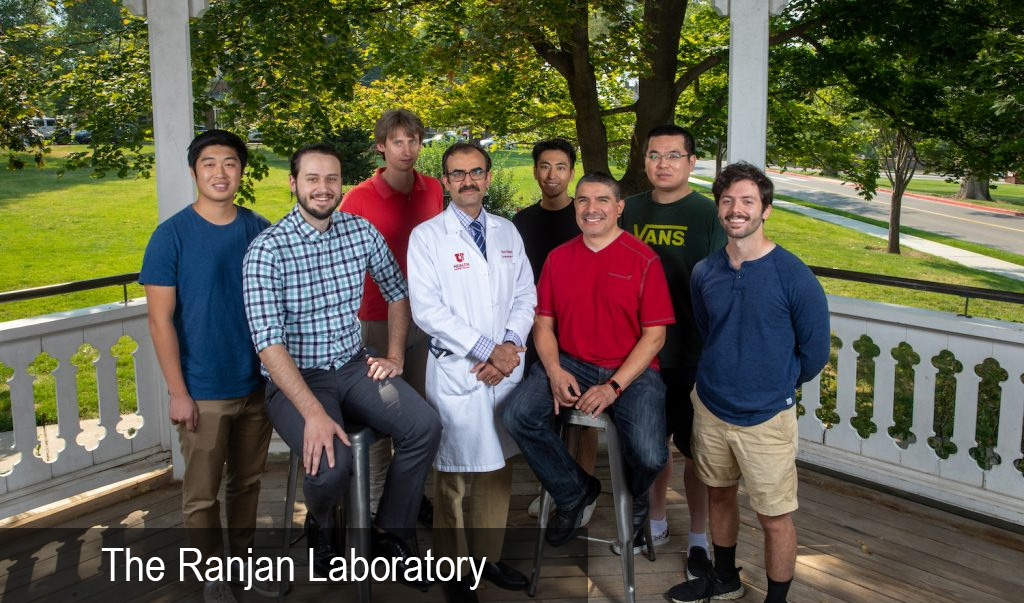
The Ranjan Laboratory’s research focuses on exploring tissue and organ scale physiology and pathophysiology in various contexts including atrial fibrillation (AF), atypical left atrial flutter (ALAF), ventricular tachycardia (VT), and cardiac stereotactic radiotherapy (cSRT). We leverage a combination of cardiac computational modeling, machine learning, large animal experimental models, cardiac magnetic resonance imaging (cMRI), biochemical assays, cardiac electrophysiological mapping techniques, and human clinical data to explore disease progression, treatment strategies, and general cardiac physiology.
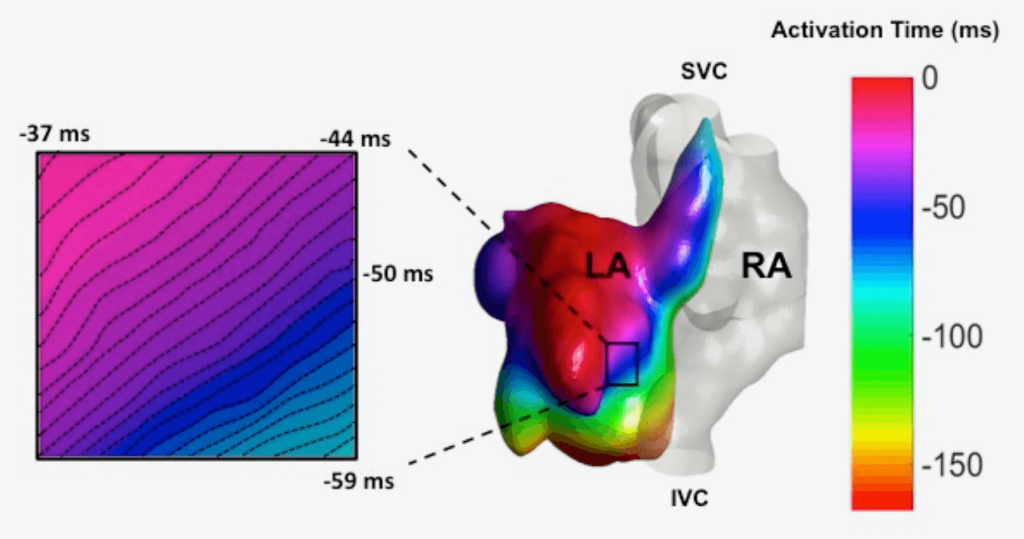
Featured Publications
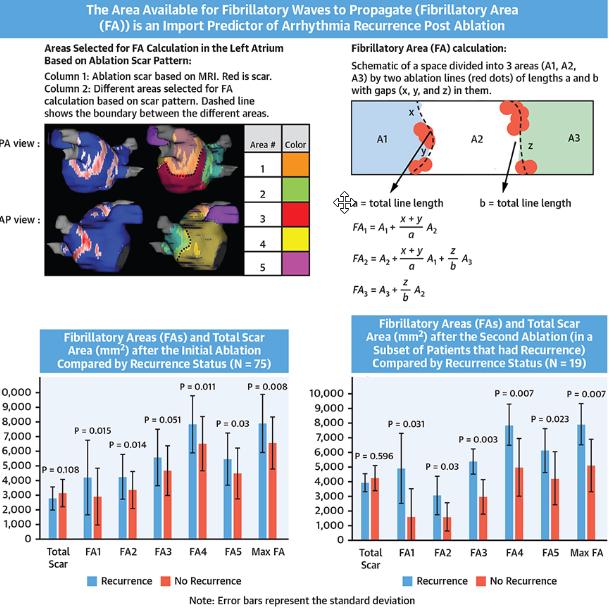 | Area Available for Atrial Fibrillation to Propagate Is an Important Determinant of Recurrence After Ablation | This study leveraged patient specific computational models to robustly define and characterize the fibrillatory area hypothesis. This hypothesis postulates that in order for reentral activity to sustain in the atria, a certain amount of contiguous atrial tissue must be available, and barriers such as ablations which reduce this area can reduce the ability of the atria to sustain reentry | Kamali R, Kump J, Ghafoori E, Lange M, Hu N, Bunch TJ, Dosdall DJ, Macleod RS, Ranjan R. Area Available for Atrial Fibrillation to Propagate Is an Important Determinant of Recurrence After Ablation. JACC Clin Electrophysiol. 2021 Jul;7(7):896-908. doi: 10.1016/j.jacep.2020.11.008. Epub 2021 Feb 24. PMID: 33640348; PMCID: PMC9255558. |
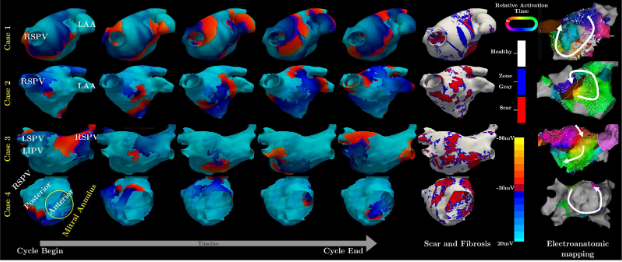 | Case report: Personalized computational model guided ablation for left atrial flutter https://www.frontiersin.org/journals/cardiovascular-medicine/articles/10.3389/fcvm.2022.893752 | Using patient specific computational models, we simulated four cases of atypical left atrial flutter. These simulations produced reentrant circuits that matched those observed in clinical electrophysiological mapping. The simulation-predicted flutters were visualized and presented to clinicians. Validation of the computational model was motivated by recording from electroanatomical mapping. These personalized models successfully predicted clinically observed atypical flutter circuits and at times even better than invasive maps leading to flutter termination at isthmus sites predicted by the model. | M. Lange, E. Kwan, D. J. Dosdall, R. S. MacLeod, T. J. Bunch, and R. Ranjan, “Case report: Personalized computational model guided ablation for left atrial flutter,” Frontiers in Cardiovascular Medicine, vol. 9, 2022, doi: 10.3389/fcvm.2022.893752. [Online]. Available: |
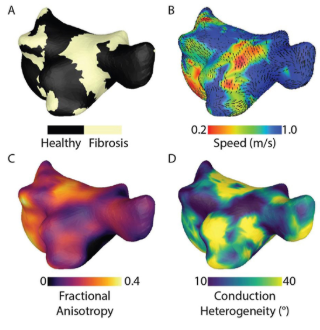 | Diffuse functional and structural abnormalities in fibrosis: Potential structural basis for sustaining atrial fibrillation | Using a combination of electroanatomical mapping and cardiac MRI analysis, we detailed the tissue and electrophysiologic changes that occur during the progression of atrial fibrillation in a large animal model. We found distinct differences in conduction velocity, conduction heterogeneity, and fractional anisotropy which correlated to tissue scale structural remodeling. | E. Kwan, E. Ghafoori, W. Good, M. Regouski, B. Moon, J. M. Fish, E. Hsu, I. A. Polejaeva, R. S. MacLeod, D. J. Dosdall, and R. Ran- jan, “Diffuse functional and structural abnormalities in fibrosis: Potential structural basis for sustaining atrial fibrillation,” Heart Rhythm, 2024 |
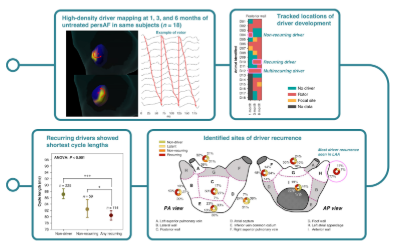 | Are drivers recurring or ephemeral? observations from serial mapping of persistent atrial fibrillation | In this study we characterized the recurrence of atrial fibrillation drivers longitudinally in a large animal model. We found that there were distinct driver locations in the atria which were observed across time. | B. Hunt, E. Kwan, E. Paccione, B. Orkild, K. Yazaki, J. Bergquist, J. Dong, R. S. MacLeod, D. J. Dosdall, and R. Ranjan, “Are drivers recurring or ephemeral? observations from serial mapping of persistent atrial fibrillation,” EP Europace, vol. 26, no. 11, p. euae269, 10 2024. |
The Ranjan Lab Research Team

Dr. Ravi Ranjan, MD, PhD
Dr. Ravi Ranjan is a practicing cardiologist and researcher specializing in cardiac electrophysiology. His clinical interests include ablation of complex cardiac arrhythmias like atrial fibrillation, ventricular tachycardias and supra-ventricular tachycardias. He also has keen interest in cardiac device based therapy like cardiac resynchronization therapy, ICDs and pacemakers. He has been a faculty member at the University of Utah since 2010 and is a tenured Professor of Medicine. He received his medical degree from Harvard Medical School, completed an internal medicine residency at Massachusetts General Hospital, Harvard Medical School, a cardiology fellowship at Johns Hopkins Hospital and a cardiac electrophysiology fellowship at Johns Hopkins Hospital. Dr. Ranjan has built a large clinical cardiology and electrophysiology practice and research group in Utah.

Dr. Eugene Kwan, PhD
Dr. Kwan is a recent BME PhD graduate. During his doctoral studies in Dr. Ranjan’s lab, Dr. Kwan investigated the structural and bioelectric changes that develop during atrial fibrillation using a combination of large animal experimental models, computational analysis, and medical imaging techniques. Dr. Kwan is now a postdoctoral fellow in Dr. Ranjan’s lab pursuing research in the area of bioelectric and structural remodeling of cardiac tissue in disease states.

Dr. Jake Bergquist, PhD
Dr. Bergquist is a postdoctoral fellow in the Ranjan lab. He completed his PhD in the spring of 2023 at the University of Utah. Dr. Bergquist’s research interests include electrocardiographic imaging (ECGI), cardiac simulation and modeling, uncertainty quantification, and optimization.

Ben Orkild
Ben is a 3rd year PhD student. His research interests include mathematical modeling, uncertainty quantification, and machine learning. He applies each of these interests to his current research, which focuses on the parameterization of cardiac digital twins of atypical atrial flutter. Outside of research, Ben enjoys riding his motorcycle, hiking, and watching sports.

Eric Paccione
Eric is a third-year graduate student working in Dr. MacLeod’s and Dr. Ranjan’s research labs. Eric completed his Bachelor’s degree in biomedical engineering at the University of Buffalo (NY) where he studied hemodynamic properties of neurovascular models. Eric’s research now focuses on computational and experimental techniques to better understand and treat life-threatening heart arrhythmias including ventricular tachycardia and atrial fibrillation.

Bram Hunt
Bram is a PhD student whose doctoral research focuses on applying machine learning and artificial intelligence to understand the progression of atrial fibrillation and analyze the complex bioelectric signals it generates.

Rui Jin
Rui is a first year PhD student pursuing the application of machine learning to assessing the progression of cardiovascular disease.
Jiawei Dong: Jiawei Dong is a Biomedical Engineering Ph.D. candidate at the University of Utah, specializing in advanced imaging applications in cardiovascular health. Under the mentorship of Dr. Ravi Ranjan, his research focuses on analyzing left atrial function using strain and LGE imaging to better understand ablation outcomes and arrhythmia recurrence. Jiawei is passionate about leveraging innovative imaging techniques to advance patient care.

Dr. Kyoichiro Yazaki, MD
Dr. Yazaki is a medical professional with 14 years of clinical experience, including a decade in electrophysiology, focusing on developing stratification scores for heart failure patients undergoing catheter ablation. His transition from clinical research in Japan to translational research reflects his commitment to bridging clinical practice with innovative therapies.
At the Nora Eccles Harrison Cardiovascular Research and Training Institute (CVRTI), Dr. Yazaki leverages advanced imaging, such as MRI-based scar identification, to refine RF index values for durable lesion creation. His work also examines atrial structural and functional changes following cBIN1 gene therapy, aiming to advance precision therapies and improve outcomes for patients with cardiac arrhythmias.

Dr. Surachat Jaroonpipatkul, MD
Dr. Jaroonpipatkul is a medical staff member in the Division of Cardiology at Rajavithi Hospital, Bangkok, Thailand, specializing in cardiac electrophysiology.


